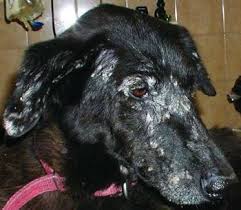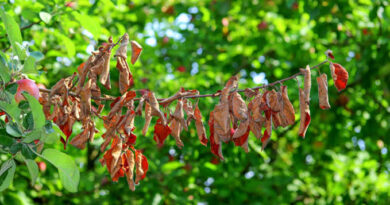Leishmaniasis: Description, Damages Caused, Control and Preventive Measures
Leishmaniasis, scientifically known as Leishmania, is a disease caused by parasites belonging to the Leishmania genus. These microscopic parasites are transmitted to humans through the bites of infected female sandflies. Leishmaniasis can manifest in various forms, ranging from mild skin lesions to severe systemic infections, depending on the specific species of Leishmania and the individual’s immune response.
The disease is prevalent in tropical and subtropical regions, including parts of Asia, Africa, the Middle East, and the Americas. Leishmaniasis exists in three main types: cutaneous, mucocutaneous, and visceral. Cutaneous leishmaniasis primarily affects the skin, causing ulcers and lesions. Mucocutaneous leishmaniasis can lead to destructive lesions on the mucous membranes of the nose, mouth, and throat. Visceral leishmaniasis, the most severe form, affects internal organs such as the spleen, liver, and bone marrow.
Transmission of Leishmania parasites occurs during the blood meal of an infected sandfly. The parasites then multiply within the human host, leading to the development of the disease. The sandfly serves as the primary vector, and various mammalian reservoirs, including dogs, rodents, and humans, contribute to the maintenance of the parasite’s life cycle.
Diagnosing leishmaniasis involves clinical evaluation, along with laboratory tests such as microscopic examination of tissue samples or molecular techniques to detect the presence of the parasite’s DNA. Treatment options depend on the type and severity of the infection. Commonly used medications include antimonials, amphotericin B, and miltefosine.
Preventive measures focus on controlling the sandfly population and protecting individuals from bites. This includes the use of insect repellents, bed nets, and proper clothing. Additionally, efforts to control reservoir hosts and raise awareness about the disease contribute to prevention.
Leishmaniasis poses a significant public health challenge, affecting vulnerable populations in resource-limited areas. Ongoing research aims to develop better diagnostic tools, treatment options, and potential vaccines. Global collaboration is crucial to addressing the complex factors influencing the spread and impact of leishmaniasis, with the ultimate goal of reducing its burden on affected communities.
Read Also: Powdery Scab (Potatoes): Description, Damages Caused, Control and Preventive Measures
Animals Affected by Leishmaniasis (Leishmania)

Leishmaniasis can affect a variety of animals, with certain species serving as reservoir hosts for the parasite. Dogs are particularly susceptible to infection and are considered the primary reservoir for some Leishmania species. In endemic regions, canine leishmaniasis is a significant concern, as infected dogs can transmit the parasites to sandflies during blood meals, contributing to the ongoing cycle of transmission.
Other mammals, such as rodents and wild canids, may also act as reservoirs, playing a role in maintaining the parasite’s life cycle. Additionally, certain domestic animals, including cattle and horses, can be infected with Leishmania parasites, although they are generally considered less important in the transmission dynamics compared to dogs.
Wild animals in endemic areas may experience leishmaniasis as well. This includes various species of rodents, hares, and other small mammals that can be bitten by infected sandflies. While these animals may not play a prominent role in the transmission to humans, they contribute to the overall complexity of the disease ecology.
Understanding the range of animals affected by leishmaniasis is crucial for comprehensive control and prevention strategies. Efforts to manage the disease often involve addressing both human and animal reservoirs, aiming to reduce the overall burden of infection in endemic regions. Public health initiatives may include interventions targeting domestic animals, such as dog culling or treatment programs, alongside measures to control sandfly populations and raise awareness in communities about the risks of leishmaniasis.
Damages Caused by Leishmaniasis

Leishmaniasis can cause a range of damages to individuals and communities, impacting both health and well-being. The severity of the damages depends on the type of leishmaniasis and the overall health conditions of affected individuals. Here are some key aspects of the damages caused by leishmaniasis:
1. Health Impact:
Cutaneous Leishmaniasis: Results in skin ulcers and lesions, often leading to disfigurement. While not fatal, the visible effects can cause psychological distress and stigmatization.
Mucocutaneous Leishmaniasis: Can lead to destructive lesions on mucous membranes, particularly in the nose, mouth, and throat, causing difficulty in breathing, eating, and speaking.
Visceral Leishmaniasis: Affects internal organs such as the spleen, liver, and bone marrow. Without proper treatment, visceral leishmaniasis can be fatal.
2. Economic Impact: The disease can contribute to reduced productivity due to the physical and mental health impacts on individuals. Treatment costs and healthcare expenses can burden affected families and communities, particularly in resource-limited settings.
3. Social Impact: Stigmatization of individuals with visible skin lesions or facial deformities can lead to social isolation and discrimination.
Communities may face challenges in terms of productivity and social cohesion due to the prevalence of the disease.
4. Public Health Impact: Leishmaniasis poses a challenge for public health systems, requiring resources for diagnosis, treatment, and prevention. Endemic regions may experience increased strain on healthcare infrastructure, especially during outbreaks.
5. Preventive Measures Impact: The need for preventive measures, such as vector control and awareness campaigns, can divert resources from other public health priorities.
Implementation of preventive strategies requires sustained efforts and community participation.
6. Impact on Animal Health: Can affect domestic animals, especially dogs, leading to additional economic and emotional burdens on pet owners.
Addressing the damages caused by leishmaniasis requires a comprehensive approach, including improved diagnosis and treatment, vector control, community education, and research to develop effective vaccines. Global collaboration and support are essential to mitigate the impact of leishmaniasis on affected populations.
Read Also: Tomato Ringspot Virus: Description, Damages Caused, Control and Preventive Measures
Control and Preventive Measures

Controlling and preventing leishmaniasis involves a multi-faceted approach addressing both human and animal components of the disease cycle. Here are key control and preventive measures:
1. Vector Control:
Insecticides: Use of insecticides to reduce sandfly populations, targeting breeding sites and resting places.
Environmental Management: Modifying or eliminating breeding sites, such as stagnant water sources and organic matter, to decrease sandfly habitats.
2. Personal Protection:
Insect Repellents: Promotion and use of insect repellents on exposed skin to reduce the risk of sandfly bites.
Protective Clothing: Wearing long-sleeved shirts, pants, and other protective clothing to minimize skin exposure.
3. Animal Control:
Canine Control Programs: Implementation of measures such as culling infected dogs or treating them with anti-leishmanial drugs to reduce the reservoir of infection.
Pet Collars: Use of insecticidal collars for pets, particularly dogs, to prevent sandfly bites.
4. Health Education:
Community Awareness: Educating communities about the transmission, symptoms, and preventive measures of leishmaniasis to promote early detection and treatment.
Hygiene Practices: Encouraging personal and environmental hygiene practices to minimize exposure to sandflies.
5. Diagnosis and Treatment:
Early Diagnosis: Improving access to diagnostic tools for early detection of leishmaniasis cases.
Treatment: Ensuring prompt and effective treatment of infected individuals to reduce the duration of illness and prevent further transmission.
6. Surveillance and Monitoring:
Epidemiological Surveillance: Establishing surveillance systems to monitor the prevalence and distribution of leishmaniasis.
Research: Conducting research to understand the dynamics of transmission and identify high-risk areas.
7. Community Participation:
Community Engagement: Involving communities in control programs to enhance participation and compliance with preventive measures.
Capacity Building: Strengthening local capacities for implementing control strategies and responding to outbreaks.
8. International Collaboration:
Research Collaboration: Promoting collaboration among researchers, institutions, and governments to develop new tools, treatments, and preventive measures.
Resource Sharing: Facilitating the sharing of knowledge, resources, and best practices globally to address the challenges of leishmaniasis.
9. Integrated Approach:
Holistic Strategies: Implementing integrated approaches that combine vector control, personal protection, and community involvement to maximize effectiveness.
One Health Approach: Recognizing the interconnectedness of human, animal, and environmental health to develop comprehensive strategies.
Sustained efforts and collaboration at the local, national, and international levels are essential for effective leishmaniasis control and prevention.
Frequently Asked Questions (FAQs) About Leishmaniasis (Leishmania)
1. Q: What is leishmaniasis?
A: Leishmaniasis is a disease caused by parasites of the Leishmania genus, transmitted through the bites of infected sandflies. It can manifest in various forms, including cutaneous, mucocutaneous, and visceral.
2. Q: Where is leishmaniasis most prevalent?
A: Leishmaniasis is prevalent in tropical and subtropical regions, including parts of Asia, Africa, the Middle East, and the Americas.
3. Q: How is leishmaniasis transmitted?
A: The parasites responsible for leishmaniasis are transmitted to humans during the blood meal of an infected sandfly. Certain mammals, especially dogs, serve as reservoir hosts.
4. Q: What are the symptoms of leishmaniasis?
A: Symptoms vary based on the type of leishmaniasis. Cutaneous forms cause skin lesions, mucocutaneous forms affect mucous membranes, and visceral forms can lead to organ damage and systemic symptoms.
5. Q: Can leishmaniasis be fatal?
A: Visceral leishmaniasis, if left untreated, can be fatal. Cutaneous and mucocutaneous forms are usually not fatal but can cause significant morbidity.
6. Q: How is leishmaniasis diagnosed?
A: Diagnosis involves clinical evaluation, microscopic examination of tissue samples, and molecular techniques to detect the presence of the parasite’s DNA.
7. Q: What are the treatment options for leishmaniasis?
A: Treatment depends on the type and severity of the infection. Common medications include antimonials, amphotericin B, and miltefosine.
8. Q: How can leishmaniasis be prevented?
A: Prevention measures include vector control (insecticides, environmental management), personal protection (insect repellents, protective clothing), and control programs for infected animals.
9. Q: Is there a vaccine for leishmaniasis?
A: Currently, there is no widely available vaccine for leishmaniasis. Research is ongoing to develop effective vaccines.
10. Q: Can leishmaniasis be transmitted directly from person to person?
A: No, leishmaniasis is not directly transmitted from person to person. It requires the involvement of sandflies as vectors for transmission.
11. Q: How does leishmaniasis impact animals?
A: Dogs are especially susceptible and act as primary reservoirs. Other mammals, including rodents and wild canids, may also be infected, contributing to the overall maintenance of the parasite’s life cycle.
Read Also: Everything You Need to Know About Moen Garbage Disposal









